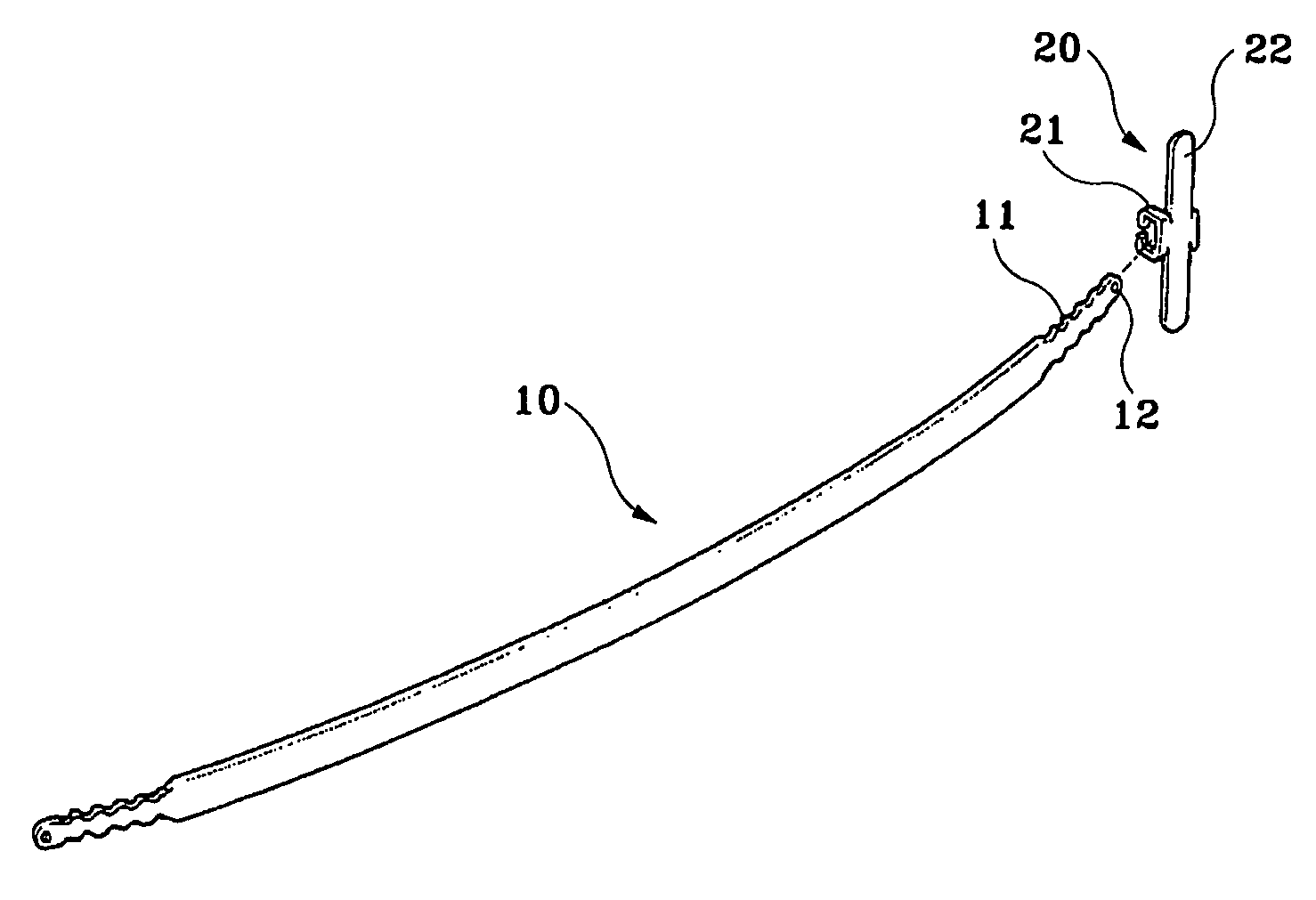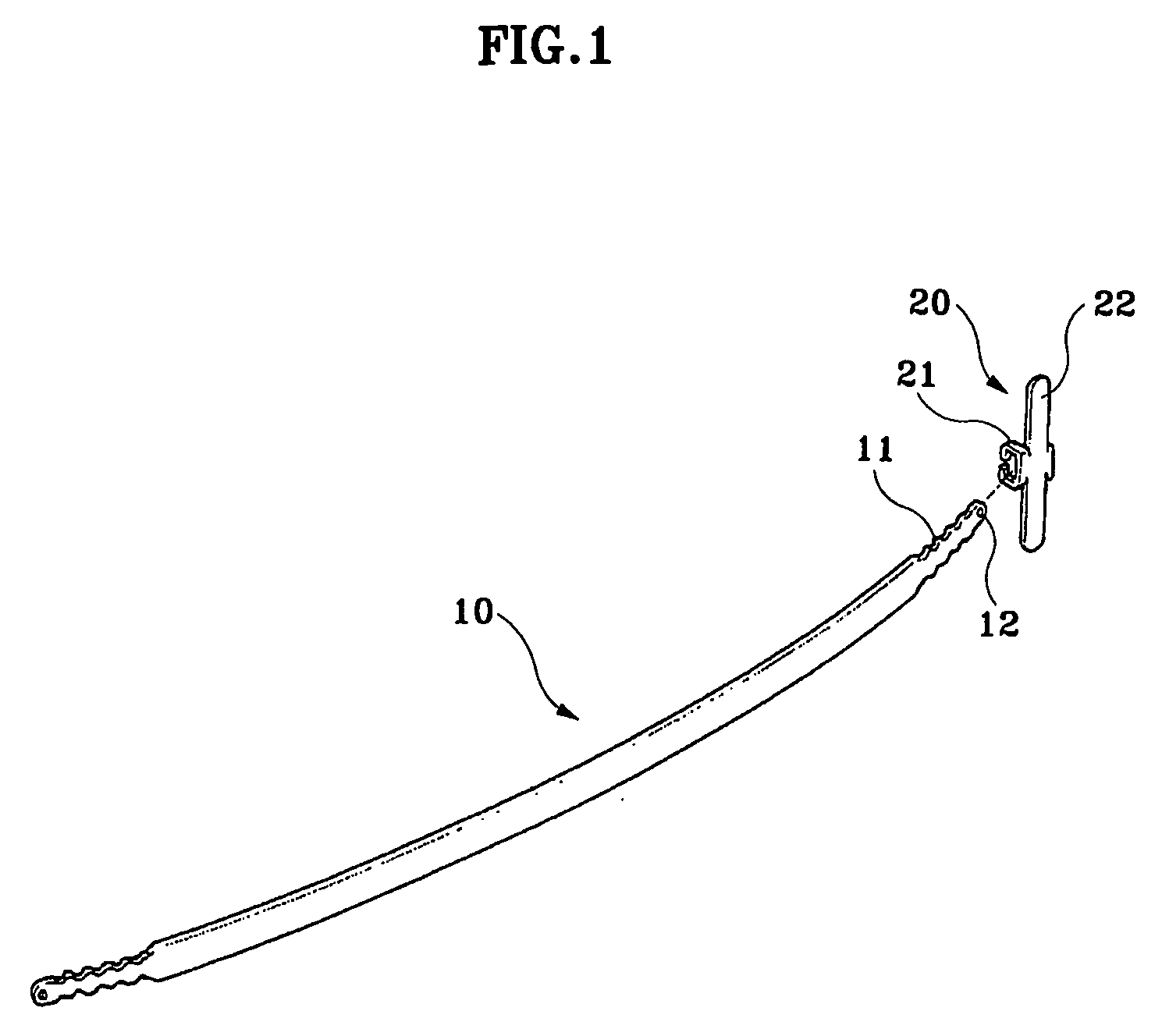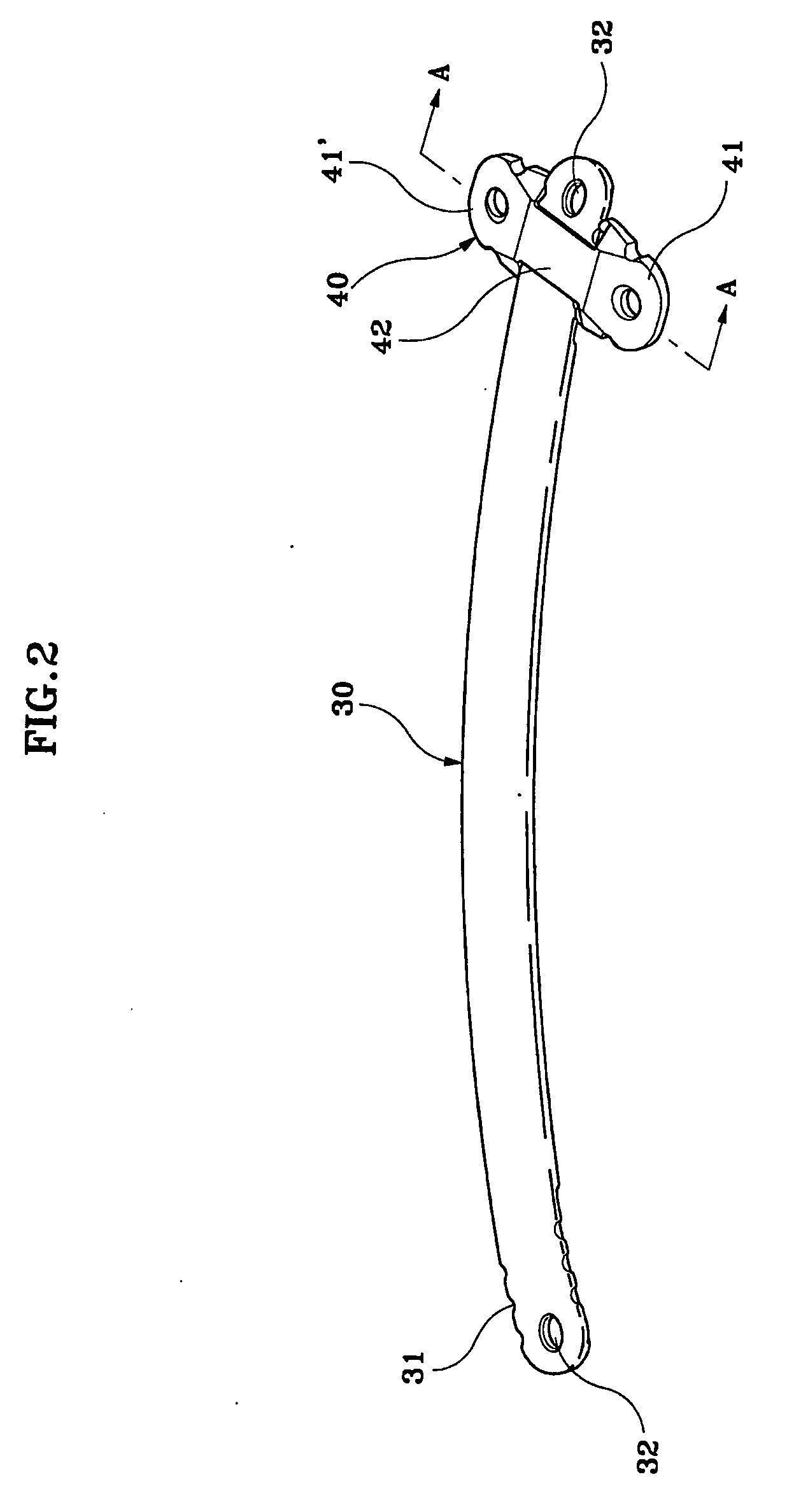Implant for correction of pectus excavatum
a technology for pectus excavatum and implants, which is applied in the field of implants for correction of pectus excavatum, can solve the problems of deteriorating the growth or function of the organ positioned, prolonging and complicating the operation procedure, undue stress for both surgeons and patients, and achieves the effect of preventing pain and infection caused by stimulation of incised parts of the patient and facilitating the insertion of the chest correction bar
- Summary
- Abstract
- Description
- Claims
- Application Information
AI Technical Summary
Benefits of technology
Problems solved by technology
Method used
Image
Examples
first embodiment
[0028]FIG. 2 is a coupled perspective view of an implant for correcting pectus excavatum according to the present invention and FIG. 3 is a partial cross-sectional view taken along A-A of FIG. 2.
[0029] As depicted in the drawings, the implant according to the present invention comprises a chest correction bar 30 going through a body for lifting a depressed sternum and surrounding costal cartilages, and a stabilizer 40 for being inserted into a distal end of the chest correction bar 30 to prevent the chest correction bar 30 from being rotated inside the body.
[0030] The chest correction bar 30 and the stabilizer 40 are made of unharmful and rust-proof biocompatible metals such as stainless steel, titanium alloy, cobalt-chrome alloy and the like, and also may be made of biocompatible polymer or copolymer such as Utra High Molecular Weight Polythylene (UHMWPE), Poly L-Lactide Acid (PLLA), Poly Glycolic Acid (PGA), Poly D-Lactide Acid (PDLA).
[0031] As shown in FIGS. 2, 4a and 4b, the c...
second embodiment
[0039]FIG. 9 is a perspective view of a stabilizer of an implant according to the present invention.
[0040] The stabilizer 40 according to the teachings of the second preferred embodiment of the present invention is mounted with the protruders of the first embodiment in the form of pins 143 and 143′ attached to fixing plates 141 and 141′. The bridge 142, lateral grooves 141a and 141′a and through holes 141b and 141′b are the same as those of the first embodiment.
third embodiment
[0041]FIG. 10 is a perspective view of a chest correction bar of an implant according to the present invention.
[0042] An intermediate thickness assigned to a chest correction bar 230 according to the teachings of the third preferred embodiment of the present invention is thinner than distal ends of the chest correction bar such that a central portion of the chest correction bar 230 in between the two distal ends thereof is hollowed. Construction of lateral grooves 231, through holes 232 and recesses 233 are the same as that of the first embodiment of the present invention.
[0043] The chest correction bar 230 of the teachings of the third embodiment of the present invention therefore may be reduced in weight due to the hollowed central portion thereof to be stably coupled with a stabilizer.
[0044] The foregoing discussion has disclosed and described merely exemplary embodiments of the present invention. It is not intended to be exhaustive or to limit the invention to the precise form...
PUM
 Login to View More
Login to View More Abstract
Description
Claims
Application Information
 Login to View More
Login to View More - R&D
- Intellectual Property
- Life Sciences
- Materials
- Tech Scout
- Unparalleled Data Quality
- Higher Quality Content
- 60% Fewer Hallucinations
Browse by: Latest US Patents, China's latest patents, Technical Efficacy Thesaurus, Application Domain, Technology Topic, Popular Technical Reports.
© 2025 PatSnap. All rights reserved.Legal|Privacy policy|Modern Slavery Act Transparency Statement|Sitemap|About US| Contact US: help@patsnap.com



